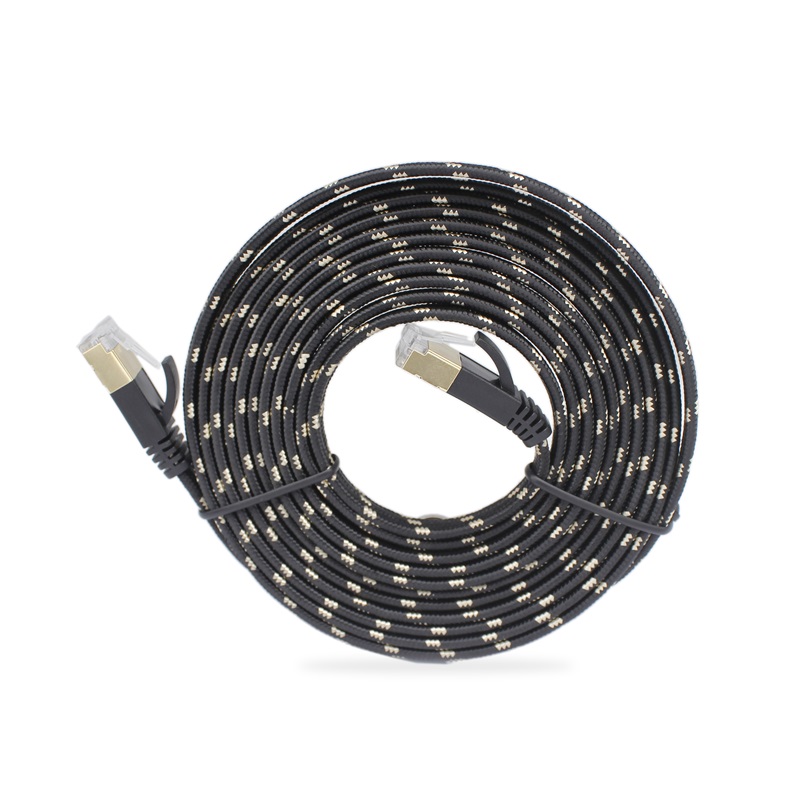
As technology continues to advance, the need for efficient data transfer becomes increasingly crucial. Slow internet speeds or dropped connections can be frustrating and hinder productivity. However, by exploring the power of advanced network cables, you can optimize your data transfer and experience seamless connectivity. This article will delve into the various types of advanced network cables and their benefits, enabling you to make informed decisions for your network infrastructure.
The Significance of Advanced Network Cables: Enhancing Data Transfer Efficiency
In today's digital world, where large amounts of data are constantly shared and processed, having reliable and fast data transfer is essential in achieving optimal performance. Advanced network cables provide significantly higher bandwidth and transmission speeds compared to traditional cables, allowing you to transfer substantial amounts of data more efficiently. These cables are designed to support the demands of modern networks, ensuring minimal latency and maximum productivity.
Exploring Different Types of Advanced Network Cables
1. Ethernet Cables
Ethernet cables are undoubtedly the most commonly used advanced network cables. They come in various categories, such as Cat5e, Cat6, and Cat7, each offering different levels of performance and capabilities. Cat5e cables are suitable for basic home networks, while Cat6 and Cat7 cables provide higher speeds, reduced crosstalk, and better overall performance, making them ideal for businesses and data centers.
2. Fiber Optic Cables
Fiber optic cables utilize light signals rather than electrical signals to transmit data, making them incredibly fast and reliable. These cables offer unparalleled data transfer speeds and are immune to electromagnetic interference, making them suitable for long-distance connections and high-bandwidth applications. Fiber optic cables are ideal for organizations that require ultra-fast connectivity and minimal signal loss.
3. Coaxial Cables
Though less common than Ethernet and fiber optic cables, coaxial cables have their own unique advantages. They are primarily used for cable television (CATV) and broadband internet connections. Coaxial cables have excellent shielding, which prevents signal leakage and ensures high-speed signal transmission over long distances.
4. USB Cables
While USB cables are commonly associated with connecting peripheral devices, they are also used for data transfer between computers and other devices. USB cables have evolved over the years, with USB 3.0 and USB-C offering faster transfer speeds and improved power delivery capabilities. These cables are essential for quick and efficient data transfer of files, documents, and multimedia.
5. HDMI Cables
HDMI cables are primarily utilized for high-definition audio and video transmission. They allow for the seamless connection between devices such as computers, TVs, gaming consoles, and projectors. HDMI cables come in different versions, with the latest HDMI 2.1 supporting higher resolutions, refresh rates, and enhanced audio formats for an immersive multimedia experience.
Maximizing Data Transfer with Advanced Network Cables: Key Benefits
By utilizing advanced network cables, you can enjoy several benefits that contribute to maximizing data transfer in your network:
- Superior Speeds: Advanced cables offer significantly faster speeds, reducing transfer times and improving overall efficiency.
- Reliability: These cables provide stable connections, minimizing interruptions, and ensuring data integrity.
- High Bandwidth: Advanced network cables offer ample bandwidth to handle large data volumes and multiple simultaneous connections without performance degradation.
- Future-Proofing: Investing in advanced network cables ensures compatibility with future technologies and prevents the need for frequent upgrades.
- Improved Signal Quality: With advanced cables, you can maintain signal integrity over longer distances and reduce the risk of data loss or degradation.
Conclusion
By exploring the power of advanced network cables, you unlock the potential to maximize your data transfer and enjoy seamless connectivity. Understanding the different types of cables available, such as Ethernet, fiber optic, coaxial, USB, and HDMI, empowers you to select the most suitable cables for your specific needs. Embracing advanced network cables not only enhances your data transfer efficiency but also future-proofs your network infrastructure. Upgrade your cables today and experience the transformation in your data transfer capabilities!


